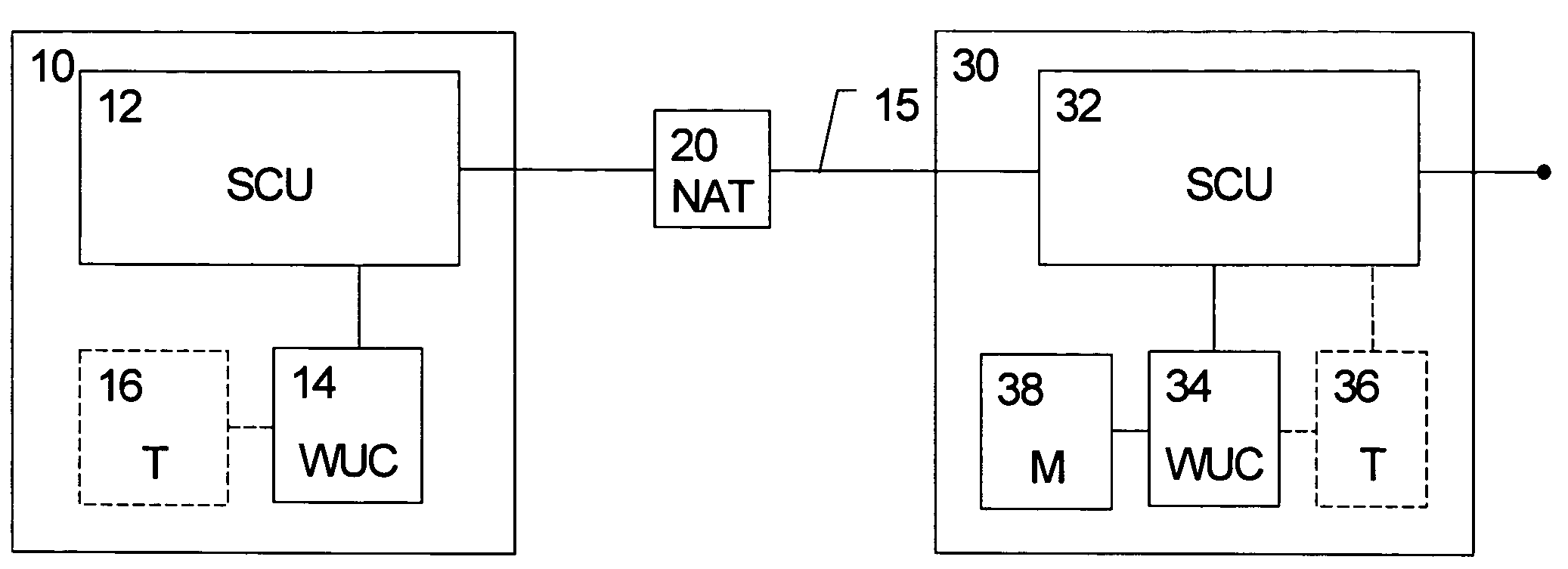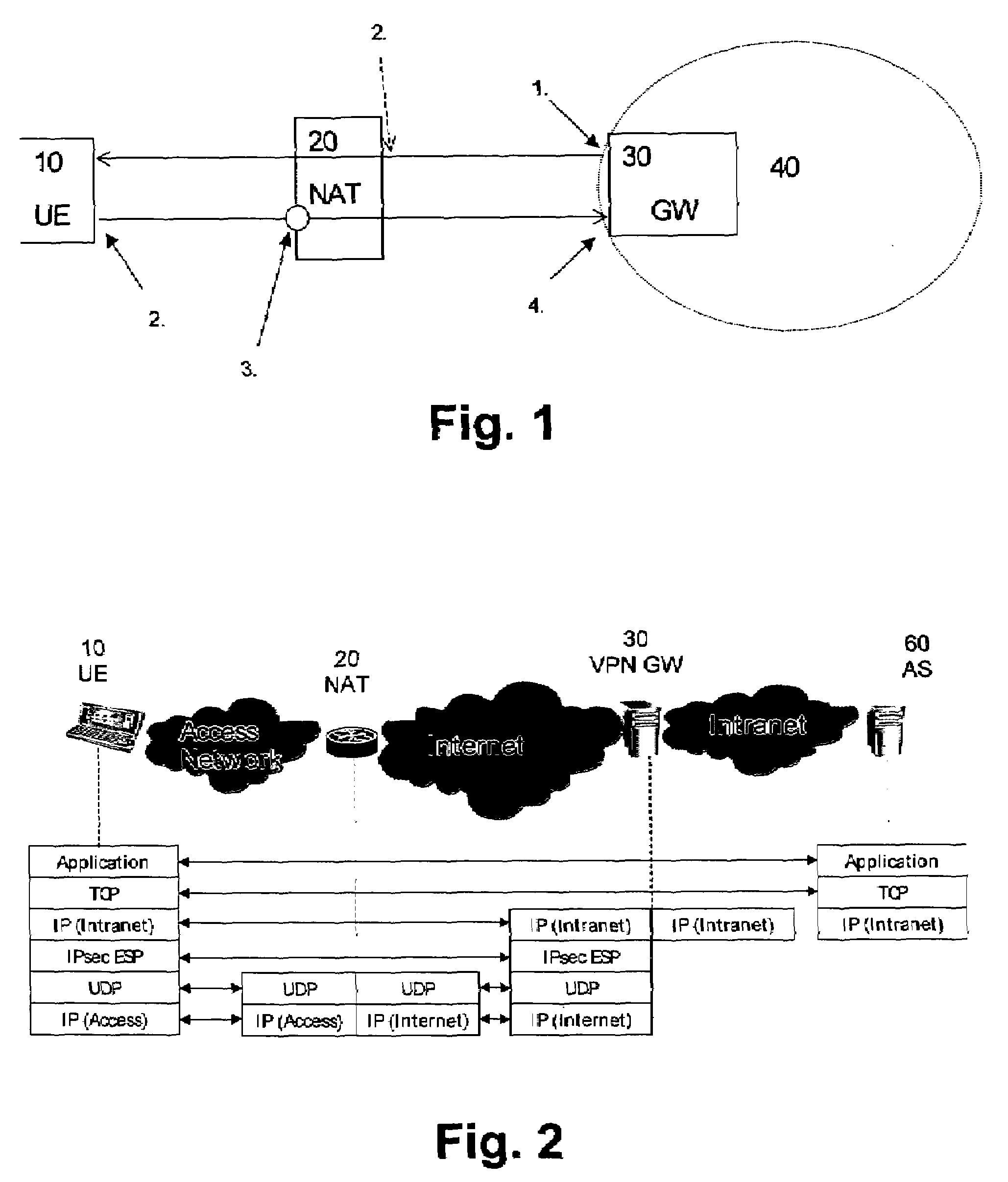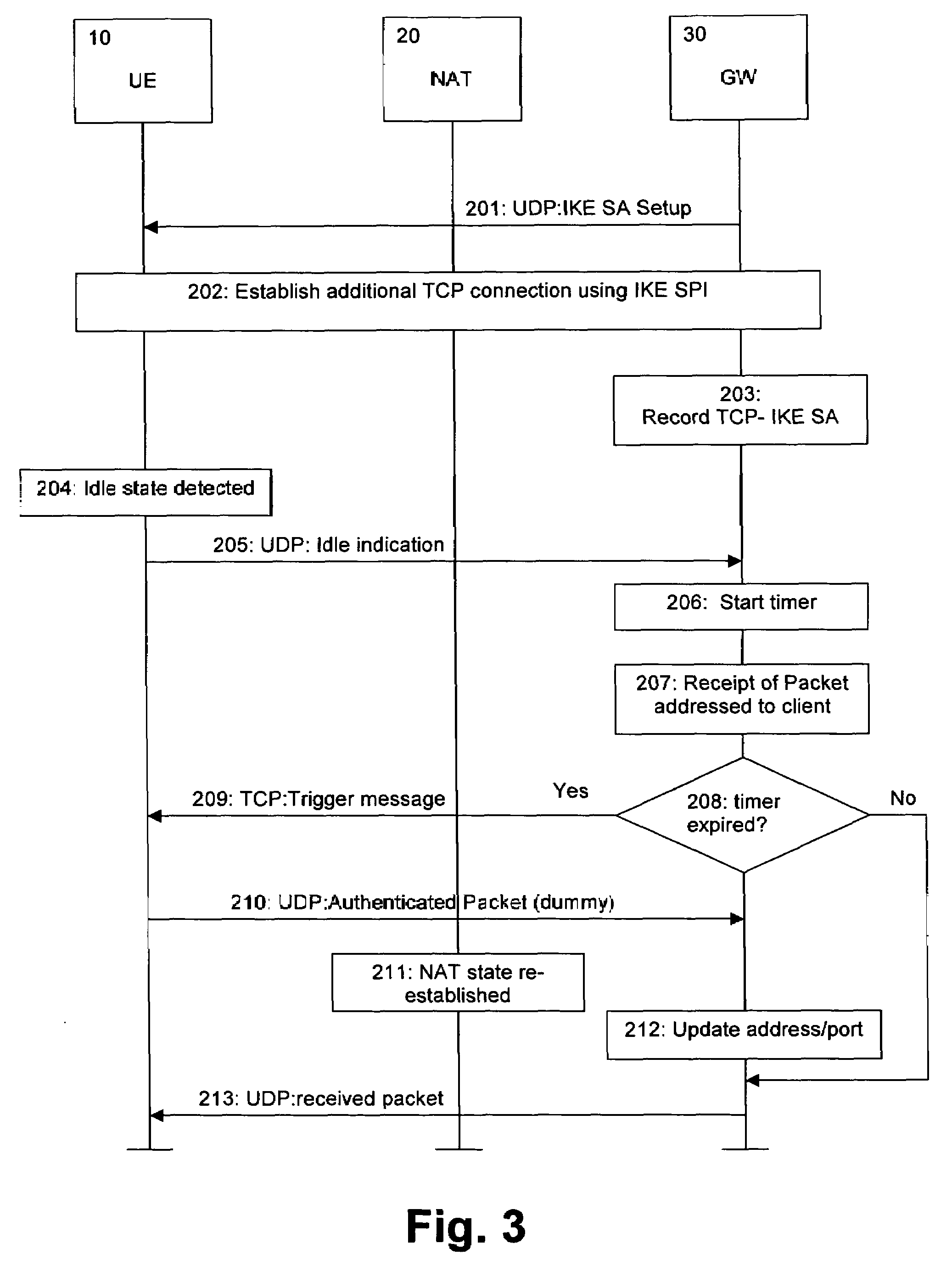Power-efficient address mapping scheme
a power-efficient and address-based technology, applied in the field of power-efficient address-based address-based mapping schemes, can solve the problems of not always convenient, lack of flexibility in using such a method, and a lot of provisioning, and achieve the effect of reducing power consumption
- Summary
- Abstract
- Description
- Claims
- Application Information
AI Technical Summary
Benefits of technology
Problems solved by technology
Method used
Image
Examples
second embodiment
[0077]In the following, the first and second embodiment will be described based on a network environment as shown in FIG. 1.
[0078]According to FIG. 1, a client device 10 (e.g. mobile device or user equipment (UE)) provided in a first network, e.g. a private network or a radio access network with an own addressing function, is connected via a NAT functionality or device 20 and a gateway device 30 (e.g. in a Virtual Private Network (VPN) configuration) or a home agent device (e.g. in a Mobile IP configuration) to a second network 40, which may be, for example, a core network of a third generation mobile communication system or a company Intranet.
[0079]In the following, basic signaling steps are described based on the sequential numbering shown in FIG. 1. In step 1, the gateway device 30, which may be a VPN gateway sends a data packet or message to the UE 10. In step 2, the dedicated message traverses the NAT device 20, but may not refresh NAT mapping as it forms incoming traffic. Havi...
first embodiment
[0087]Support for the proposed feature can be negotiated when the IKE SA is created using normal IKE negotiation mechanisms (e.g. Vendor-ID and / or Notification payloads). The gateway device 30 can then send the port number to be used to the client device 10.
[0088]When the TCP connection is opened, the gateway device 30 needs to know which IKE SA this TCP connection corresponds to. A simple way is to send the IKE SPI. The TCP connection could also be secured using a cryptographic key (sent at the same time as the port number).
[0089]The wake-up trigger message could be, for instance, a single byte with value 1. Of course, any other value or length could be selected.
[0090]If the TCP connection is broken for some reason, this can be detected, and the client device 10 can re-establish the TCP connection.
[0091]In cases where the gateway device 30 does not assign a new IP address for the client device 10, an IPsec Security Policy Database may need to be updated, so that the TCP connection...
PUM
 Login to View More
Login to View More Abstract
Description
Claims
Application Information
 Login to View More
Login to View More - R&D
- Intellectual Property
- Life Sciences
- Materials
- Tech Scout
- Unparalleled Data Quality
- Higher Quality Content
- 60% Fewer Hallucinations
Browse by: Latest US Patents, China's latest patents, Technical Efficacy Thesaurus, Application Domain, Technology Topic, Popular Technical Reports.
© 2025 PatSnap. All rights reserved.Legal|Privacy policy|Modern Slavery Act Transparency Statement|Sitemap|About US| Contact US: help@patsnap.com



